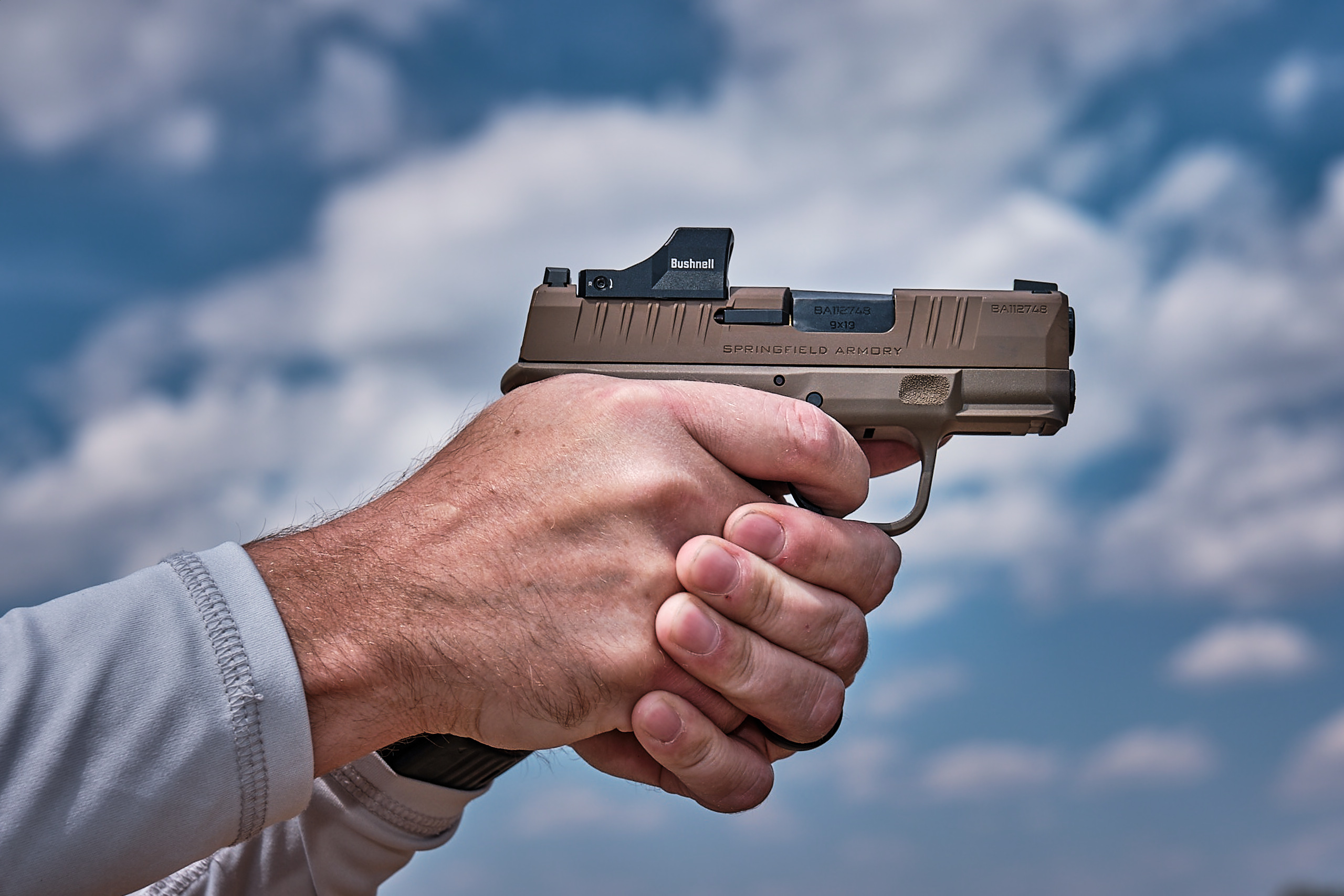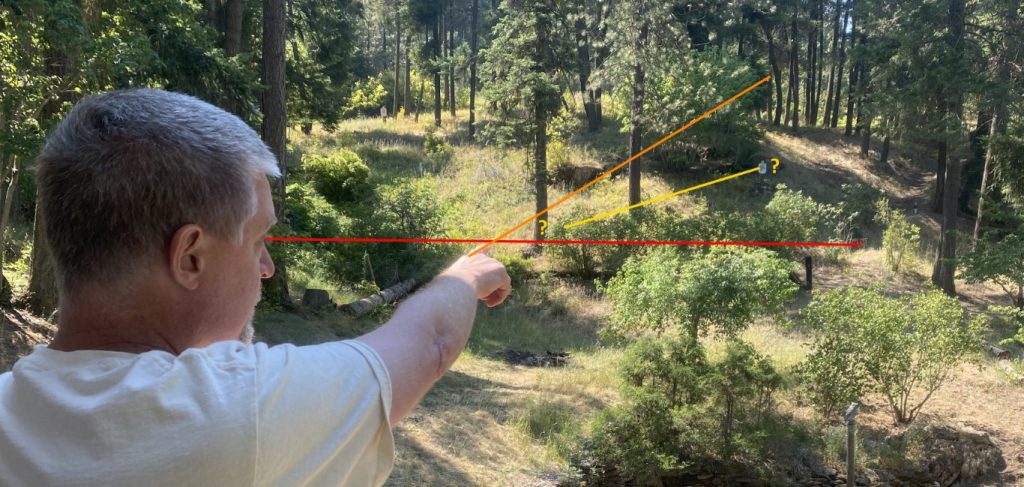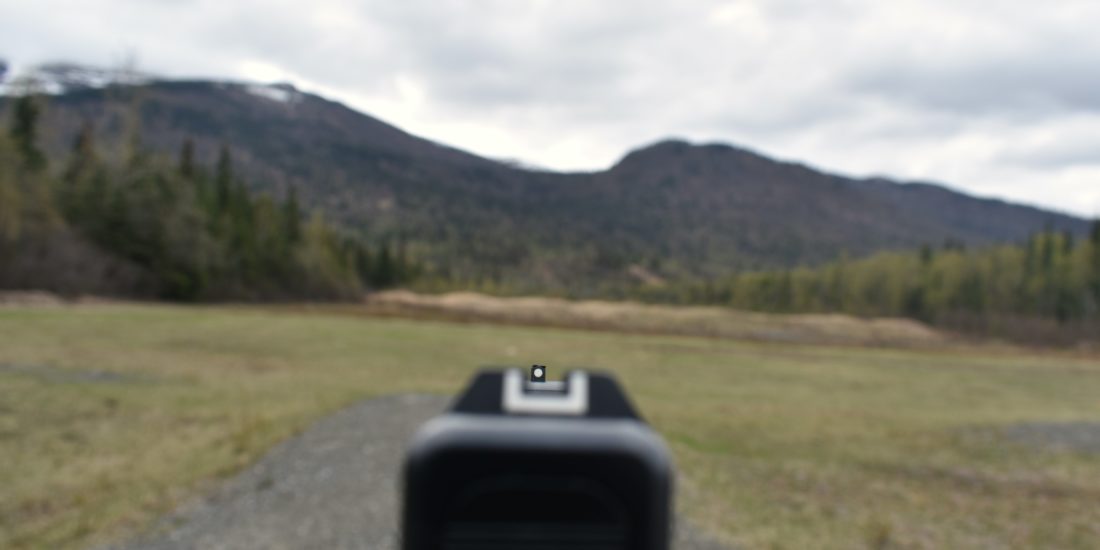Why Point Shooting Doesn’t Work

I get into frequent discussions with shooters and instructors on the merits of sighted shooting vs. point shooting.
Now, to be clear, I teach that there’s a time for both and teach a blended approach that lets shooters seamlessly and effortlessly switch back and forth, but this isn’t something you can just decide you’re going to do…it takes deliberate practice.
The big argument against sighted shooting is that it’s too slow…which can be largely, but not completely mitigated with vision training. Besides retention issues and the fact that you probably can’t get a sight picture on a threat within three to six feet, it’s a basic law of physics that it’s quicker to shoot when your gun is on the way out to full extension than waiting until it’s at full extension.
The big argument against point shooting is that it’s not accurate or predictable enough.
But, at the same time, countless instructors claim — and demonstrate — that point shooting is accurate and predictable by shooting shotgun shells, 9 mm brass, and coins out of the air — all without using their sights.
And thousands of students have taken point shooting classes and shot like rock stars by the end of the class.
So…what’s going on? Why is there any debate or disagreement?
Try this little experiment with me…
Most people have had a pointer finger attached since birth and feel pretty darn confident in their ability to point.
So, right now, pick a switch on the wall, a screw/nail head, a book on a bookshelf, hinge on a door, or something else 10-20 feet away that you can point at.
Try the drill both standing and sitting and see if there’s a difference…a lot of times, people will do better sitting than standing, because of the added challenge of balance.
With your hands by your side or in front of your chest, slowly extend your shooting arm/finger out so that you’re pointing at and covering the switch/object you picked. (Your finger will be between your dominant eye and the switch/object. Your non-dominant eye will still be able to see the switch/object.)
Repeat this three to five times until you are confident you could do it with your eyes shut or with the lights off.
Now, with your hands by your side or in front of your chest, shut your eyes, extend and point where you think the switch is. Open your eyes.
Are you dead-on? Then you have a much better than average chance of making first hits on target with point shooting, but keep in mind that with this drill, you’re aligning 1 point (the end of your finger) with the target and with a firearm, you’re aligning 2 points (the front and back of the slide) with the target.
Are you high/low/right/left? Then you’d probably miss in that same direction if you tried making a cold shot with point shooting.
Are you off a lot? That’s part of why people regularly shoot two, five, or more shots at attackers who are only feet away and miss with every round.
How’s that even possible?
When you’re pointing in a low stress situation with your eyes open, your brain is constantly adjusting and correcting as you extend your arm.
Your brain is getting immediate feedback of where you’re pointing, and your brain self-corrects on the fly…like a servo.
The same thing happens when you practice dry fire with a laser, live fire against a dirt berm or on a target where you can see where you hit.
It’s called a cybernetic loop. (Cybernetics is a fancy — but not new — word for a self-correcting loop. The concept has been around since Plato, Ampre and comes from the Greek word kubernetes…which is a name for a self-correcting rudder on a ship.)
When shooting, your brain sees where you’re hitting, and makes minor adjustments between shots to get you on target — creating a self-correcting loop.
This also serves to calibrate and synchronize your visual system, your balance/vestibular system, and your proprioceptive system…or your brain’s awareness of where your body is in space. When they’re all working together, point shooting is natural, easy, and it’s normal to think that everyone should be able to do it.
It usually doesn’t take too many reps to get dialed in…and then the gun seems to aim itself.
When it’s working, it’s FAST, accurate, and pretty amazing. There’s a tendency to think that if you can do it at the end of a range session, you’ll be able to do it on-demand with a first shot when lives depend on it.
The problem is it’s an incredibly perishable skill.
In a point shooting class, shooters will oftentimes have to “warm up” again after lunch and at the beginning of each day to be accurate again.
But, by the end of each day, performance levels are oftentimes unbelievable and confidence levels are through the roof.
The problem comes in with shooting situations where you don’t get to warm up first…or when you aren’t putting 40,000, 50,000 or more rounds downrange per year and constantly refining the skill.
Or, when you can’t see where your hits are going…like in a self-defense situation…and can’t take advantage of that self-correction process. Or, when you need to make a precision shot…like a hostage situation, or someone behind partial cover, or a distant target.
If your visual, vestibular, and proprioceptive systems are all working together at that moment in time, then you’ll get your hits.
If not, you are probably looking at ineffective hits or misses.
So, when you see some YouTuber saying that you don’t need to aim and then demonstrating their ability to point shoot…take it with a grain of salt. Don’t use it as an excuse for not training.
What’s happening is that, when you start pushing speed with sighted shooting, your sights are going to naturally start being in alignment with the target sooner in the shooting process and you get “point shooting” as a bonus skill.
For someone shooting every day or a few times a week, they’re going to get better at point shooting regardless of whether they practice sighted shooting or point shooting.
And it’s going to seem like point shooting is natural…but that’s only because of the reps they did in advance…not because of some natural ability to point.
As my friend and fellow instructor Dusty Solomon has exhaustively tested and written about, if you start with point shooting…because of the fact that it’s easier for the brain to do…it’s very hard to switch from point shooting to sighted shooting. The brain is going to want to default to the method that takes less effort…even if it results in more misses, so it’s vital that you start with sighted shooting.





